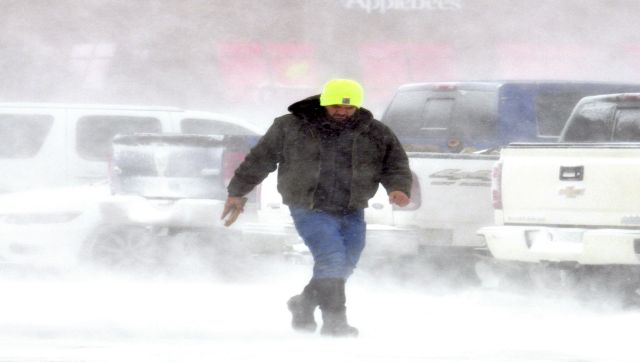The Arctic is warming. Data show that much of the region is now heating up four times faster than the rest of the world. Now, scientists say there may be a link between the Arctic warming and the extreme cold weather in the United States, parts of which are currently experiencing frosty temperatures. Let’s take a closer look: What is happening? While scientists say there is no consensus yet about the physical link between the warmer weather in the Arctic and the bitter cold in the United States, research seems to point that way. Most recently a 2021 study in the journal Science that combined observations and models which showed that Arctic warming likely disrupted the polar vortex – a large area of low pressure and cold air surrounding Earth’s poles that weakens in summer and grows stronger in winter – again. As per Weather.guv, ‘vortex’ refers to the counter-clockwise flow of air that helps keep the colder air near the poles. When the polar vortex expands during winter in the northern hemisphere, cold air is sent southward. This previously occurred in January 2014, 1989, 1985, 1982 and 1977. According to Science.org, observations and models show Arctic warming likely played an important role in what is called stratospheric polar vortex disruption (SPV). Authors say ice melting in the Barents and Kara seas leads to increased snowfall over Siberia and a transfer of excess energy that impacts the swirling winds in the stratosphere above the North Pole. [caption id=“attachment_11811771” align=“alignnone” width=“640”] The Arctic. Image courtesy: Pixabay[/caption] That heat ultimately causes a stretching of the vortex which then translates into extremely frosty weather in the US. The research’s lead author Dr Judah Cohen told BBC, “We’re arguing that melting sea ice across Northwest Eurasia, coupled with increased snowfall across Siberia is leading to a strengthening of the temperature difference from west to east across the Eurasian continent.” Cohen, a professor at the Massachusetts Institute of Technology (MIT) and a director of Atmospheric and Environmental Research, a weather risk management company, added, “We know when that temperature difference increases, that leads to more disruptions of the polar vortex. And when it’s weakened, that leads to more extreme winter weather such as the Texas cold wave last February.” What do experts say? That we need to begin taking climate change seriously. “There has been a long-standing apparent contradiction between the warmer temperatures globally, however, an apparent increase in cold extremes for the United States and in northern Eurasia. And this study helps to resolve this contradiction,” professor Chaim Garfinkel from the Hebrew University of Jerusalem, fellow study of the author, told the BBC. “In the past, these cold extremes over the US and Russia have been used to justify not reducing carbon, but there’s no longer any excuse to not start reducing emissions right away.”
This seems to be becoming a pattern, experts added.
“We’ve seen the same situation basically the last three years in a row,” Jennifer Francis, senior scientist at the Woodwell Climate Research Center in Massachusetts told Washington Post. “Here we go again.” It was Francis that kicked off the debate with a research paper in 2012. She speculated that Arctic warming was reducing the contrast between polar and tropical temperatures – which weakened the jet stream (strong winds that help guide weather patterns). That, in turn, would allow cool weather systems to move from the Arctic to areas with typically mild climates. Daniel Swain, a climate scientist at UCLA, told the newspaper he expects follow-up studies will eventually confirm the link between the two. “We’re 10 years into this conversation and there’s still a lot of mixed feelings in the scientific community, though there is some tantalising evidence that there is some ‘there’ there,” Swain told the newspaper. US left reeling A massive storm has killed at least 34 people across the United States and is expected to claim more lives after trapping some residents inside houses and knocking out power to tens of thousands of homes and businesses. The extreme weather stretched from the Great Lakes near Canada to the Rio Grande along the border with Mexico. About 60 per cent of the U.S. population faced some sort of winter weather advisory or warning, and temperatures plummeted drastically below normal from east of the Rocky Mountains to the Appalachians. The National Weather Service said Sunday the frigid arctic air “enveloping much of the eastern half of the US will be slow to moderate.” Travelers’ weather woes continued, with hundreds of flight cancellations already and more expected after a bomb cyclone — when atmospheric pressure drops very quickly in a strong storm — developed near the Great Lakes, stirring up blizzard conditions, including heavy winds and snow. With inputs from agencies Read all the Latest News , Trending News , Cricket News , Bollywood News , India News and Entertainment News here. Follow us on Facebook, Twitter and Instagram.


)

)
)
)
)
)
)
)
)



